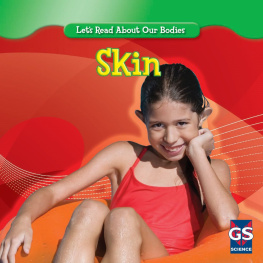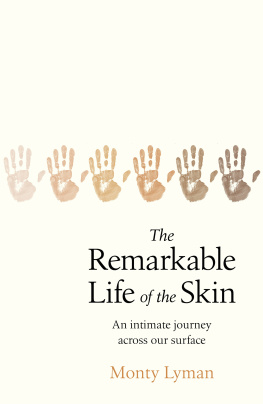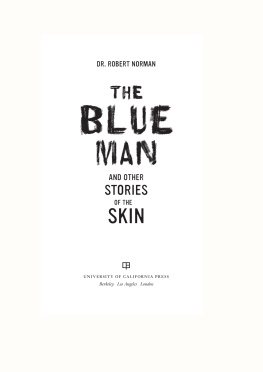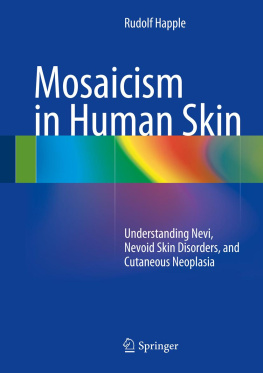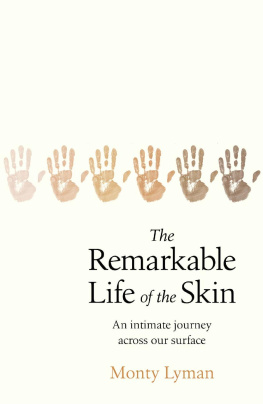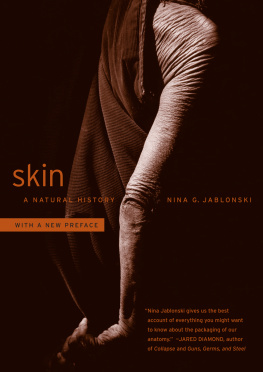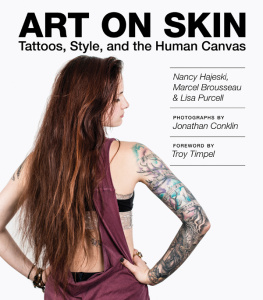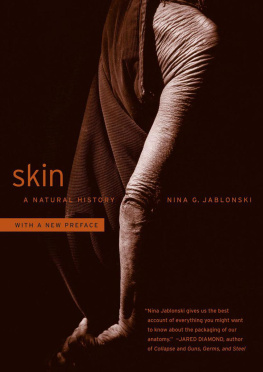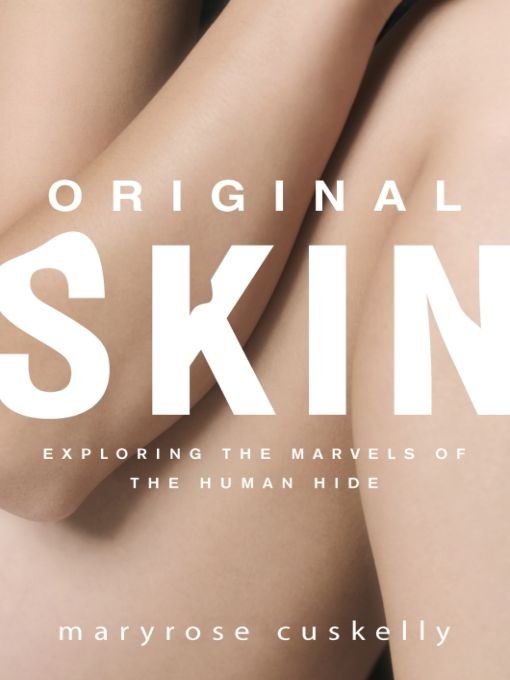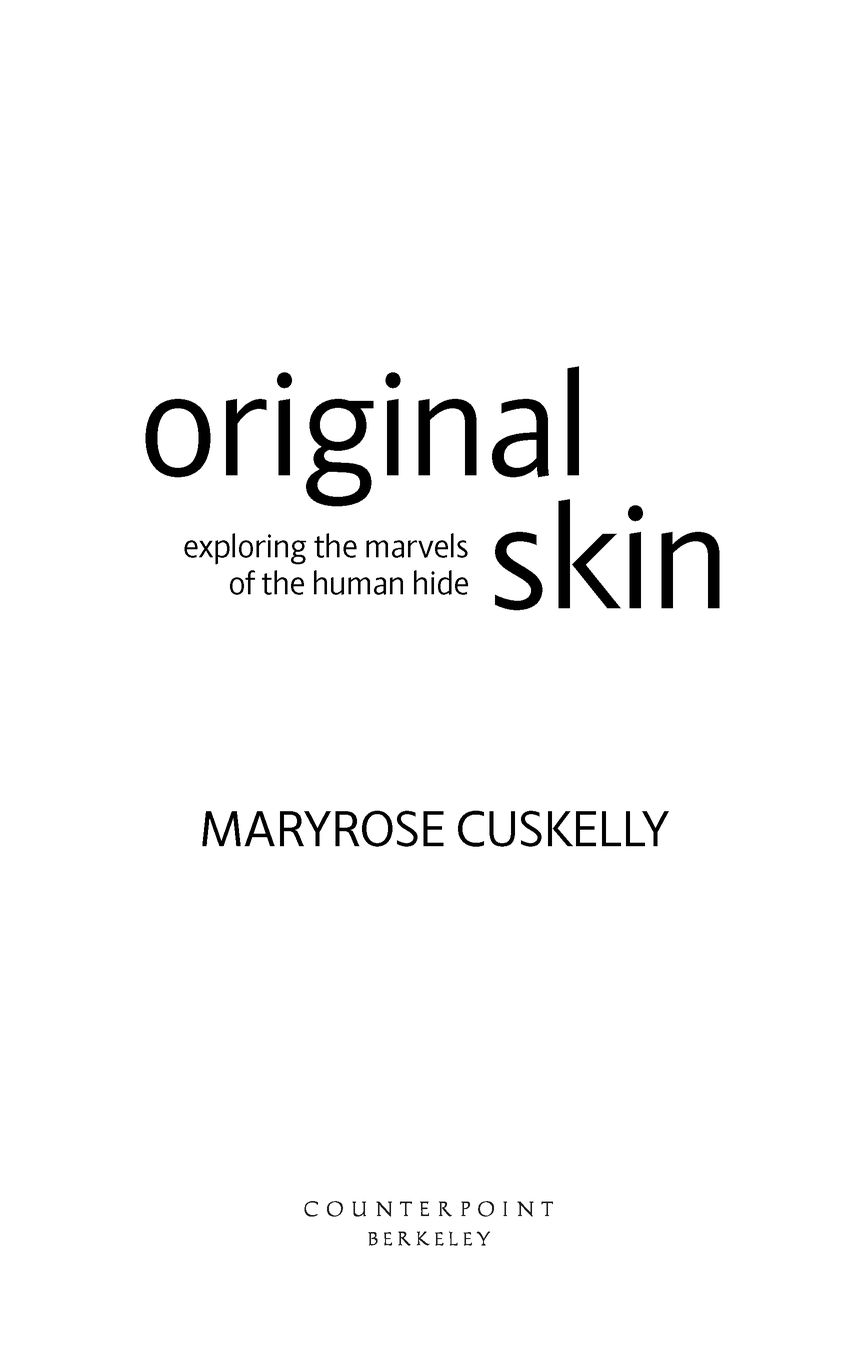Table of Contents
For B, Gabe, and Rory:
Not under my skin, but deep in the heart of me.
Empresses of the Japanese Bath
I FEEL LIKE I am all skin. Its not just that I am naked, but that the warm air presses up against me like a damp blanket. I scrub my skin with the rough flannel, scraping off dead skin cells and other accumulated detritus until it is pink and smooth. Its as though I am reminding myself of the limits of my existence: where the edges of my body meet the air.
Only minutes ago, I was clothed and on the street, standing outside the humble exterior of the Japanese bathhouse, surrounded by warehouses and sandwich bars in a nondescript street in inner-city Melbourne.
From the moment I step through the door with the prim, handwritten sign Strictly non-sexual! taped to the glass, there is no room for ambiguity: all activity here will be undertaken with decorum. The removal of clothes, and the exhibition of the skin and the body it encases, could be read as an invitation to breach the very boundary displayed. Yet the atmosphere at the bathhouse makes me aware of containment, rather than any messy spilling over or melding of forms.
In Japan, where the communal bath has a long tradition, I imagine group nakedness is no barrier to laughter and the exchange of gossip. Here, in predominantly Anglo Melbourne, where nudity is associated with private intimacy, the tone is discreet, muted, almost solemn.
Over the threshold, I remove my shoes and receive a small stack of towels, a flannel, and cotton pyjamas. Disrobing in the change room, I take the flannel and a towel and enter the tub room. Taps and showerheads on hoses are set below a long mirror; shampoo and body wash are placed on a low, narrow ledge. My body must be scrupulously cleaned before disturbing the pristine waters of the tub. The hard plastic of the small stool that I perch on to perform my ablutions presses into my skin.
There are four of us in the womens area, and it seems to me we move carefully and deliberately, as if the ritual of the public bath has bestowed a gravity to our movements and bearing that evaded us while clothed. It is a little like being in church: the muted tones of our voices, low and respectful; the dimly lit space and the air of contemplation.
I lower myself carefully into the water so that I only create the most well-mannered of ripples across its surfacesplashing is definitely not an appropriate response to the expanse of dark fluidity. My skin registers the rising tide of hot liquid, and the silken touch of the water soothes not just my body but my endlessly flapping thoughts. Languorous and heavy, my mind, too, allows itself to be cradled in the buoyant embrace of the bath.
Nudity accentuates the bodys physical borders. The skin unclothed registers the limits of the bodys perimeter more so than when it is swathed in garments. Clothes tend to blur the boundaries between the physical world and the body so that it is more integrated with the medium in which it is enveloped. Here in the bath, I feel the shape that the contours of my flesh leave in the water like a mould cast in silicone.
Its not quite polite to stare at others when theyre nude, and yet here we all are in our skin. Being naked in the presence of other nude women is somehow reassuring. One is encouraged to view the body in its entiretynot parcelled up into unsatisfactory bits presented for consumption. The body dressed only in the skin has a wholeness, an integrity that is sometimes kinder than clothes that shield and reveal our shape.
Perhaps I would be less well-disposed towards nudity if some young Amazonall long legs, high breasts and flat, un-creased bellywas sitting beside me in the weltering heat. But the young Amazons are elsewhere today, and it is just us ordinary women with our dimpled thighs, our puckered stomachs, our unremarkable beauty, moving from the plastic stools to the bath, the sauna, and the change room with deliberate grace and gravity, clothed only in our skins; empresses in our new clothes.
Skin: the bodys envelope
You gotta have skin,
All you really need is skin
Skins the thing that if you got it outside
It helps keep your insides in
Skin, Allan Sherman
ONCE, on a long-distance flight, I sat next to a young man from southern Italy. After a brief conversation about how little Sorrento on Victorias Mornington Peninsula resembled Sorrento, Campania, he closed his eyes and slept throughout most of the 11-hour flight.
I didnt begrudge his silent slumber, however, as it gave me the opportunity to contemplate the delicious milky-brown skin at the nape of his neck. His soft black hair was short, and the delicate groove that ran from the base of his skull to his second or third vertebra was tantalisingly visible. I didnt run my finger along that silky hollow, but I indulged myself in imagining doing it. I was content simply to gaze as he, completely oblivious to the effortless beauty of his own skin, slept on.
OUR SKIN fixes the boundaries of our physical selves and separates us from the rest of the world. It is the wrapping on the package of flesh, blood, and bone that is our body. Pliant, elastic, able to heal itself, it is where we end and the rest of the cosmos begins.
Exquisitely sensitive and able to register the faintest nuances of atmospheric change, our skin lays us bare to a constant bombardment of sensation.
Through our skin we contact the world; with it we touch and are touched. The skin alerts us to texture, temperature, pressure, pain and pleasure. It is scratched, kneaded, rubbed, and pinched and in response is soothed, stung, and irritated, along with our emotions. Demanding to be stroked and massaged, it flushes and blushes, tickles and tingles, itches and burns. Exterior stimuli prompt it to exude sweat and other fluids from its pores and glands. Freckles, dimples, wrinkles, scars, stretch marks, and moles occur like features on a landscape and the skin itself can range in colour from the milkiest white to an intense blue-black. Eruptions of boils, shingles, or pimples may mar its surface, causing pain and embarrassment. Alarmingly, it bruises and bleeds. Blistering and flaking, puckering and stretchingand feeling, always feelingthe skin is in a constant state of response, alerting the body to the conditions that surround it.
Our skin is unique to each of us; not even identical twins will share the same fingerprint. The pattern of whorls, ridges, and lines found on the tips of the fingers are peculiar to every individual, and can be used to identify us or determine where we have been and what we have touched.
If the skin can leave traces alluding to past events, it is tempting to believe that it can also reveal intimations of the future. If you gaze at your palm for long enough it can come to look like a map, or even a landscape; perhaps the mouth of a mighty river delta, or an aerial view of channel country in flood.
The romance of having your fortune mapped out in the contours and swirls of your palm, the etched lines crisscrossing the fleshy pad and revealing the key to your fortune, is seductive. Its an intoxicating idea that you carry the secrets of your life cradled in your hand and yet concealed, only those versed in the lore of chiromancy able to unlock the secrets there.
The scene is easy to conjure up: the wrinkled crone, swathed in appropriately bohemian garb, firmly grasping your hand in hers. She turns your palm upward and traces her finger (be-ringed and grubby) along the lines and creases there. Lovers, children, spouses, health, wealth and contentment: all the veiled secrets of your future are revealed by this inheritor of Romany wisdom and relayed to you when you cross the gypsys own dusky palm with silver.





